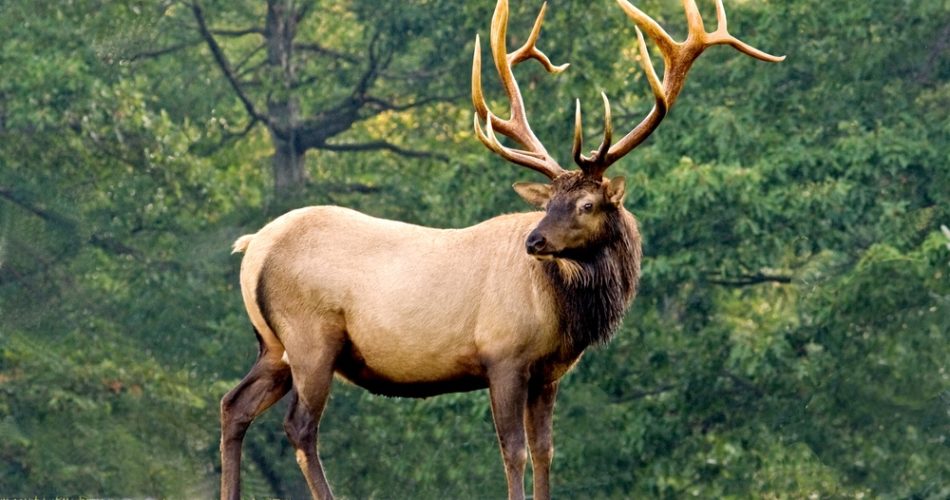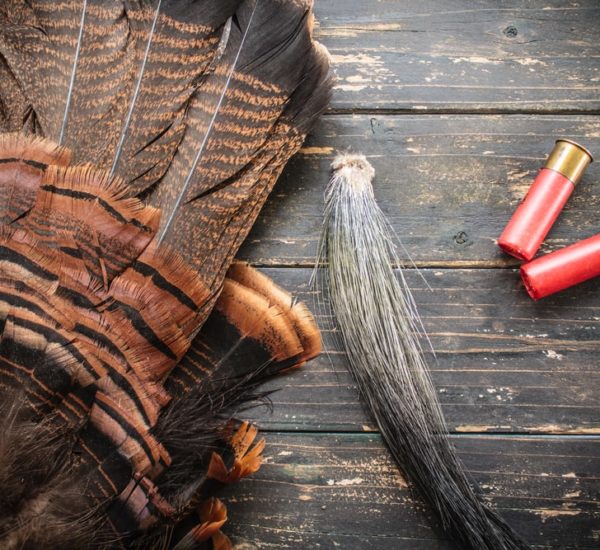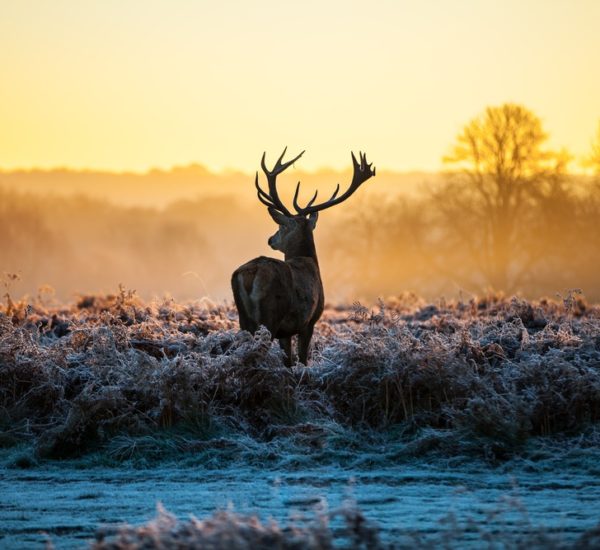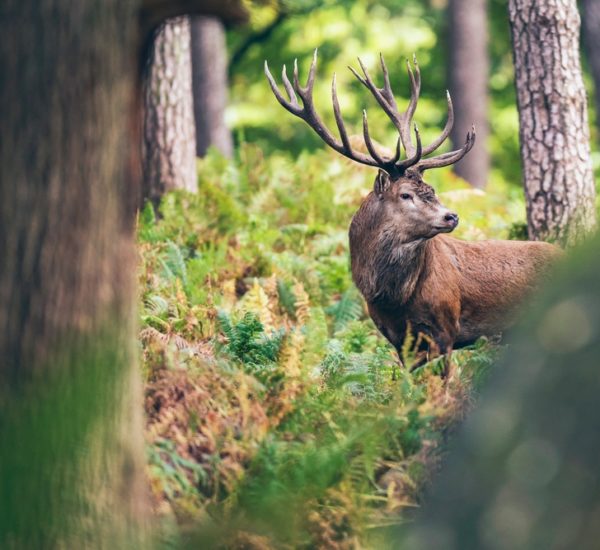Elk Hunting is one of the most promising and interesting outdoor sports today, with several hundreds of people involved one way or another. It is an outdoor activity that requires tools, skills, and tenacity. An elk provides different sorts of things, including meat (source of protein), making it a big deal; in other cases, people hunt it only for recognition, i.e., trophy. However, not to bore you with the details about game hunting, let’s find how much meat from an elk is guaranteed in a single game hunting.
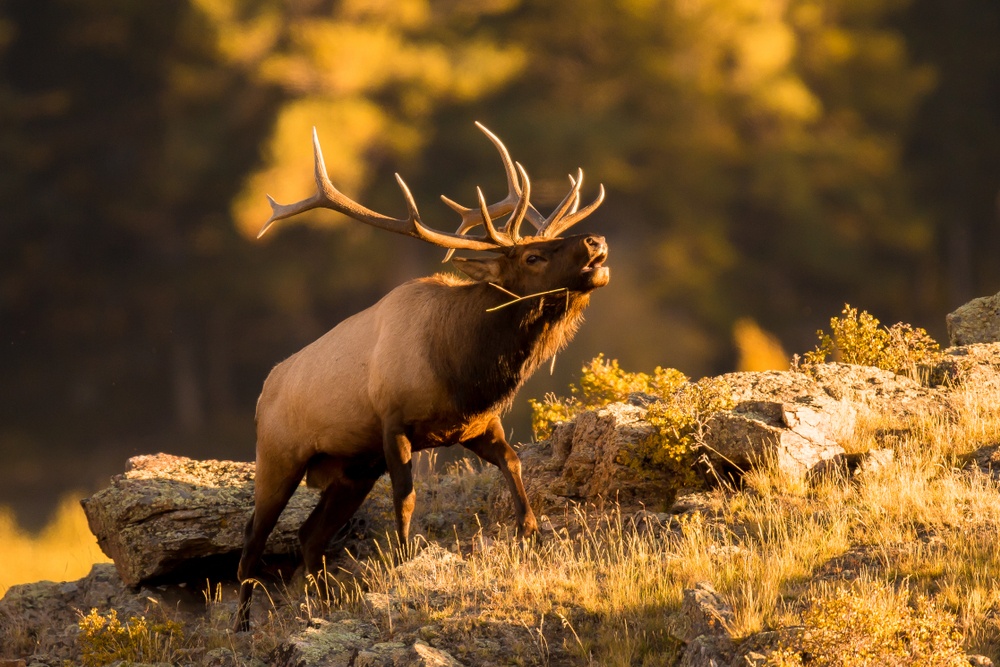
How Much Meat is Harvested from an Elk?
While you are interested in knowing how much meat is on an elk, you must also be informed on the proper terms. Meat got from elk or deer is called “Venison.” It is somewhat a generalized name, but it originally belongs to this class of animals. Venison is different from all other types of meat, i.e., beef, the rests, quantity, texture, taste, tenderness, nutritional value, color, etc.
That being said, elk produces boneless meat. However, the yield range ranges from one elk to another, depending on some factors, including gender and gunshot wounds. On average, most animals have a boneless meat yield of 50 to 55%; however, an elk produces only 48% – about 180 pounds.
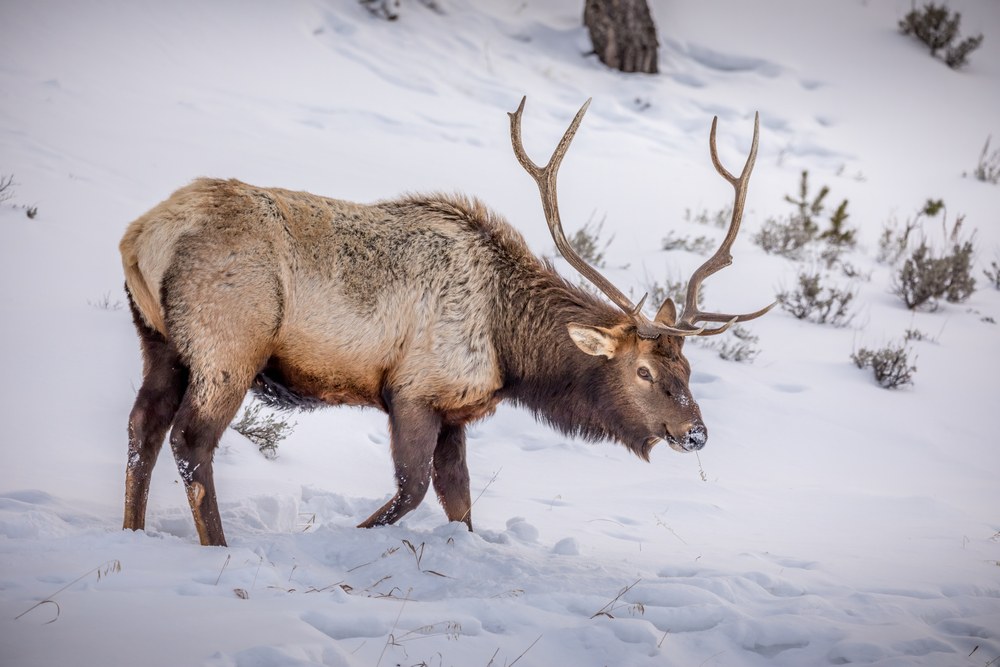
What are the Factors that Determine the Quantity/Quality of Elk Meat?
In a bid to know how much meat you should get from an elk or deer, a couple of factors determine yield. These factors include;
Elk Gender: Male Elk Vs. Female Elk
The first factor that determines how much meat you can get from an elk is the Gender of the Elk. A male elk is called a Bull elk; a female elk is called a Cow Elk. Both are great sources of meat but differ from each other in size.
At a young and tender age, cow and bulk elks are almost alike in every aspect; however, they begin to change body mass and gain/lose features as they grow older. For instance, a bull elk have antlers while a cow elk doesn’t. Due to these differences, there is a tendency for a range in the quantity of harvested meat.
Besides, a cow elk only grows within three elk’ years; after then, it starts gaining little weight. On the other hand, a bull elk grows and gains weight within 7 to 10 years, depending on the available diet.

Weight
As mentioned above, the gender of an elk affects the weight, which ultimately determines yield. Based on research, it has been discovered a mature bull elk is heavier than a cow elk; it weighs about 750 pounds. On the other hand, a mature cow elk weighs between 350 to 500 pounds.
However, the average weight of an elk is 500 pounds.
With this disparity in weights, you should know that the meat yield will also be different. Therefore, a bull elk should produce between 190 to 225 pounds of boneless meat, while a cow elk should yield 160 pounds.
Additionally, the field dressed weight and the estimated boneless meat yield has a relationship. The former is 70% of an elk’s live weight, i.e., the removal of content in the abdomen, thoracic area, and legs, but the inclusion of the head and hide. Whatever is remaining is put into consideration to estimate the yield of the meat.
Health Status
Animals go through health challenges, same as humans. Their health status determines their productivity, either for work or meat yield. A cow or bull elk in a poor state of health would produce less yield than usual. That is why there is more emphasis on the “maturity” of an elk when describing one.
Maturity isn’t only a term used to describe its fulfillment in body mass but also to describe its health status. You may not have the leisure of confirming if an elk is healthy or not during hunting, making it impossible to estimate the yield. However, after hunting, you can always verify if it was a healthy one and finally get a yield estimate.
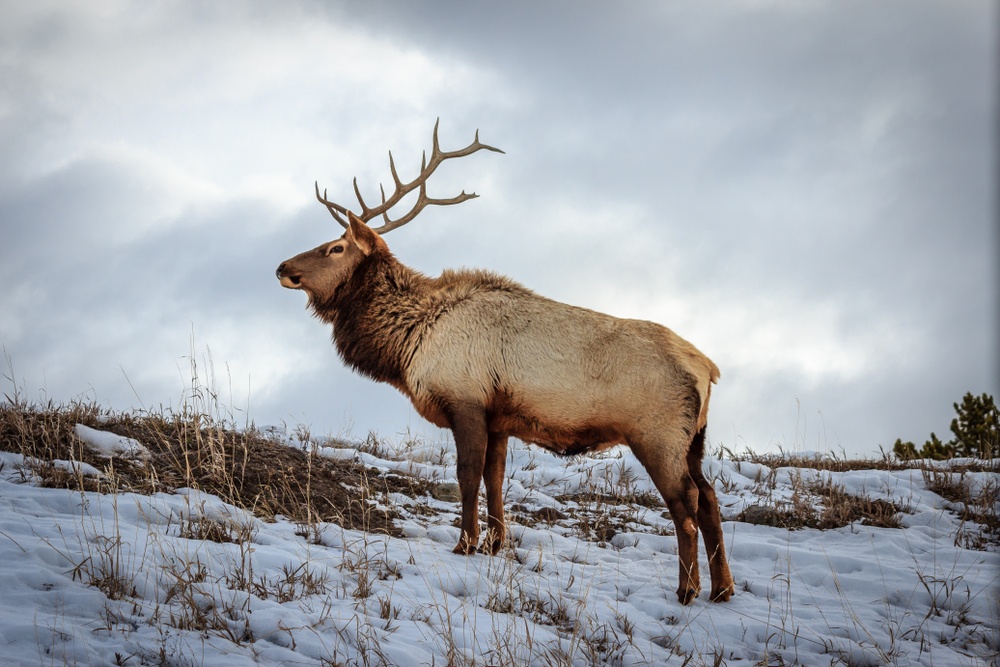
Locality
The environment in which an elk is raised has a huge role to play in its yield or productivity. The locality may provide some of the basic things needed for growth, such as food, weather, etc. That is why you don’t just find elks anywhere. Some top-rated states in the United States to find elks that will yield great quality meats include Colorado, Oregon, Wyoming, Idaho, Texas, Montana, Oklahoma, Utah, and others.
Processing Pattern
Other factors that contribute to the quantity of meat from an elk are embedded in the processing pattern. With your game looking lifeless and ready to be processed, you need the right set of tools to get started. It will involve you doing a lot of trimming, cutting, cooling, washing, etc., to remove the meat from the game itself. If you don’t get suitable with the processing procedure, the final elk meat quantity might be a little lower than what you estimated.
What are the Processing Tools Needed to Get Meat from an Elk?
Before you begin processing a game, you should get the essential tools for the following processes.
Here it comes:
Cutting and Trimming
The first thing you need to do is use a trimmer on the elk to reduce the amount of dirt on the body, preventing them from ruining the meat’s quality. When taken care of, you can now use a hand saw or boning saw to cut the bony parts, such as the limbs. The aim is to achieve a lump of boneless meat, and only a saw would do that for you.
Fabricating
Now that you have a large piece of boneless meat, you should weigh it first and determine the final yield (in pounds). When you have a specific figure, proceed to meat fabrication, i.e., cutting. Since you have a large piece, it would be much better to cut them into much simpler pieces for easy processing and preservation. There are a series of knives you need here.
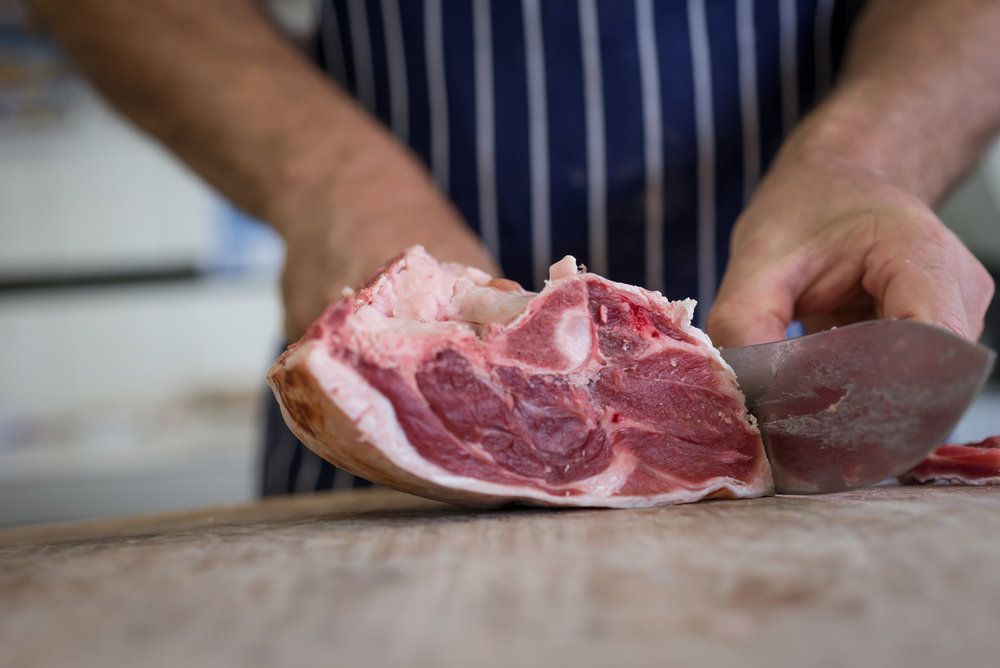
Cleaving/Hooking
If you don’t want to cut the large piece of meat into smaller pieces, you should consider hooking it with a clamp. If you have been to a butcher’s house, they hang large pieces of meat in a special room to preserve them and dry them out to improve quality tasting. However, not everyone can afford the luxury of doing that.
Grinding
Another effective way of processing elk meat for consumption is grinding it into much smaller pieces. A meat grinder is the most appropriate in this case. It is useful in several ways, especially for sausages and in-house burgers.
Sharpening
Finally, the last set of tools you need are sharpening tools. You should have these tools to improve the blade quality of your knives, saws, and any other cutting tool made of steel.
Preserving Elk Meat
With so much meat that a mature bull or cow elk can yield, it is almost impossible to finish eating in one sitting – either alone or with family. That leaves you with only one option of preserving inside a freezer until you are ready for subsequent consumption. Freezing is a great method of preserving food while it’s fresh; hence, it would work perfectly for elk meat.
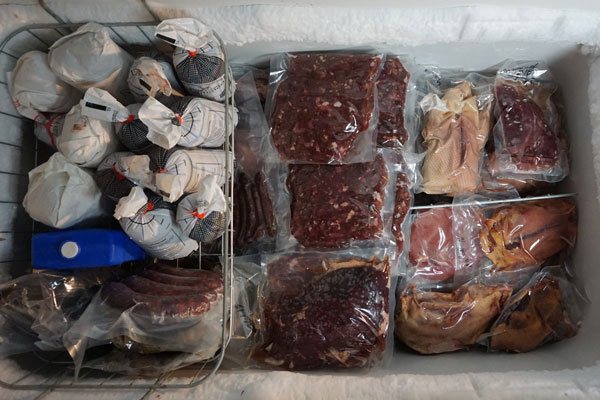
FAQs
Find some questions you may have about elk hunting and meat harvesting answered in this section.
How Much Meat Do You Get From an Elk Brokeback?
Brokeback Mountain was one of the shady places for elk hunting. A film was made about this place that depicted scenes of elk hunting, animal cruelty, etc. On average, there was a yield of 210 lbs.’ of boneless meat from an elk within the locality. That same yield is also synonymous with what you get from a regular elk.
How Much Meat From an Average Elk?
In discovering how heavy are elk, there is a good chance you can estimate the amount of boneless meat they yield. An average 600 pounds’ elk yields about 200 lbs. of meat. As you recall, it is always constant due to certain circumstances surrounding the elk’s health status and processing.
Do You Need a License to Hunt Elks?
Yes, you need a license to hunt for elks in the United States. These licenses aren’t only for elk hunting but any other that involves hunting animals in the wild. Additionally, there are local laws that support the hunting of wild animals or not. In that case, you need to make yourself familiar with that jurisdiction before anything else.
Conclusion
Participating in elk hunting is one thing; learning what there is to know about an elk itself is another. After reading each section of this comprehensive guide, you should finally know how much meat from an elk is guaranteed and the various reasons, processes, and tools needed to achieve that. With this piece of information, you are more knowledgeable about elks apart from knowing how to hunt them.


